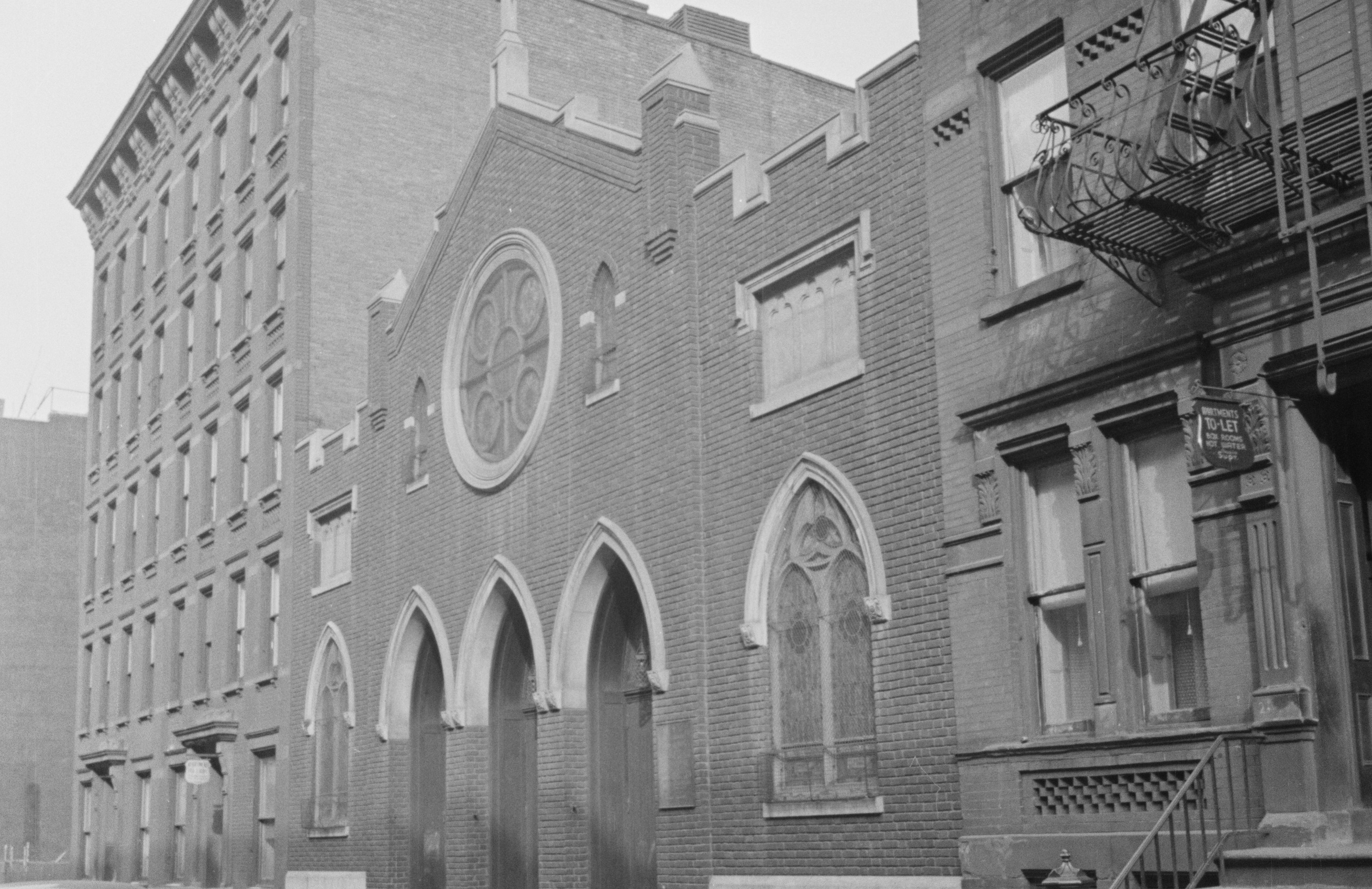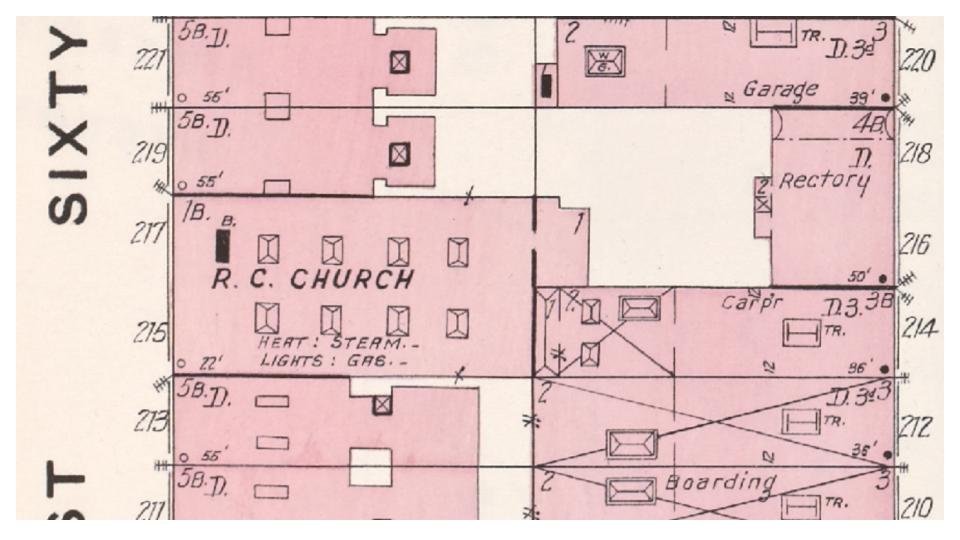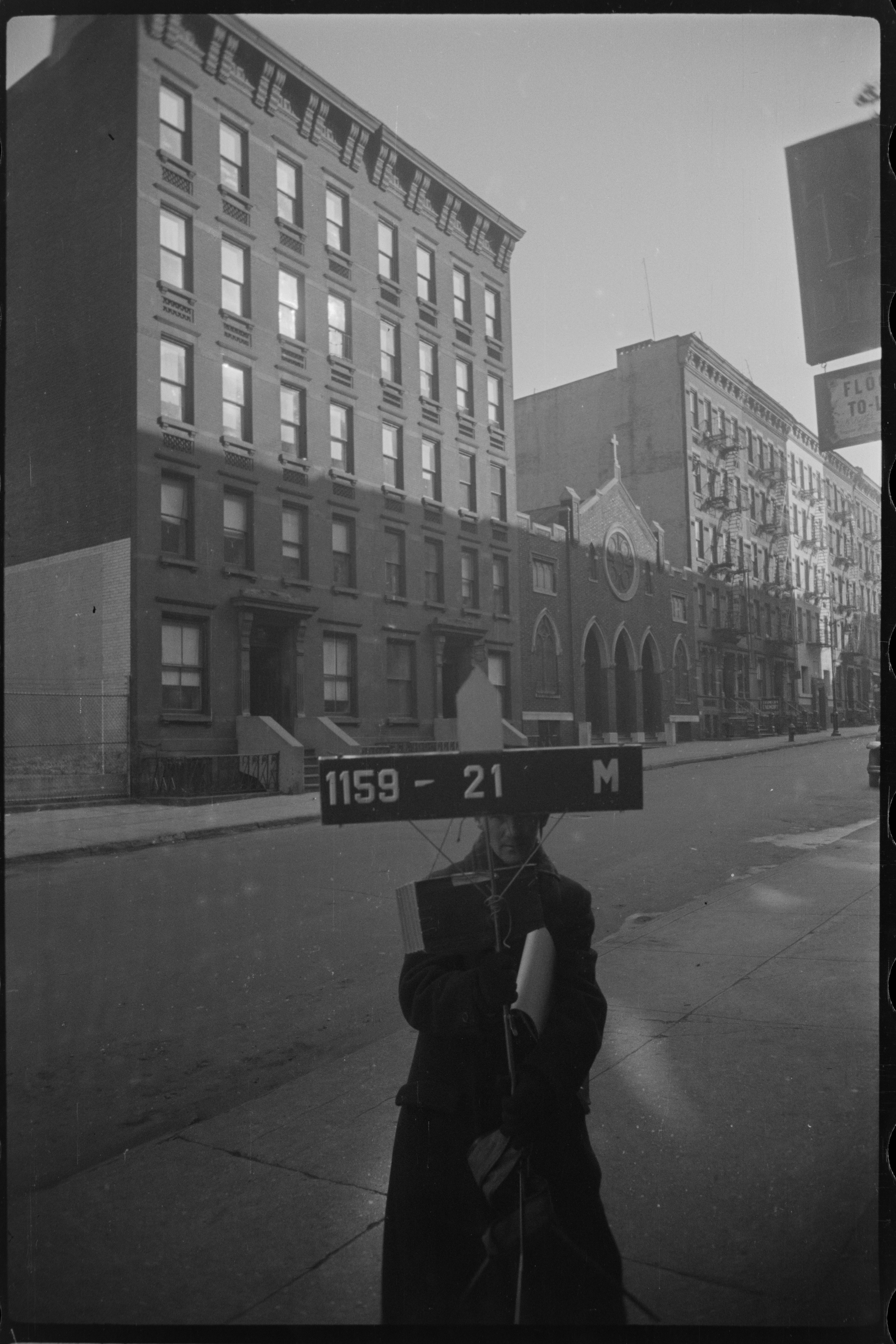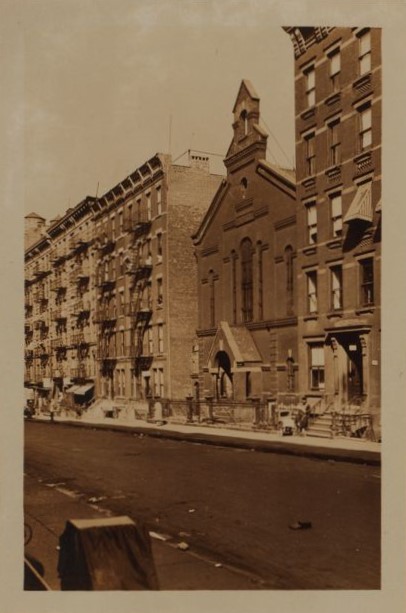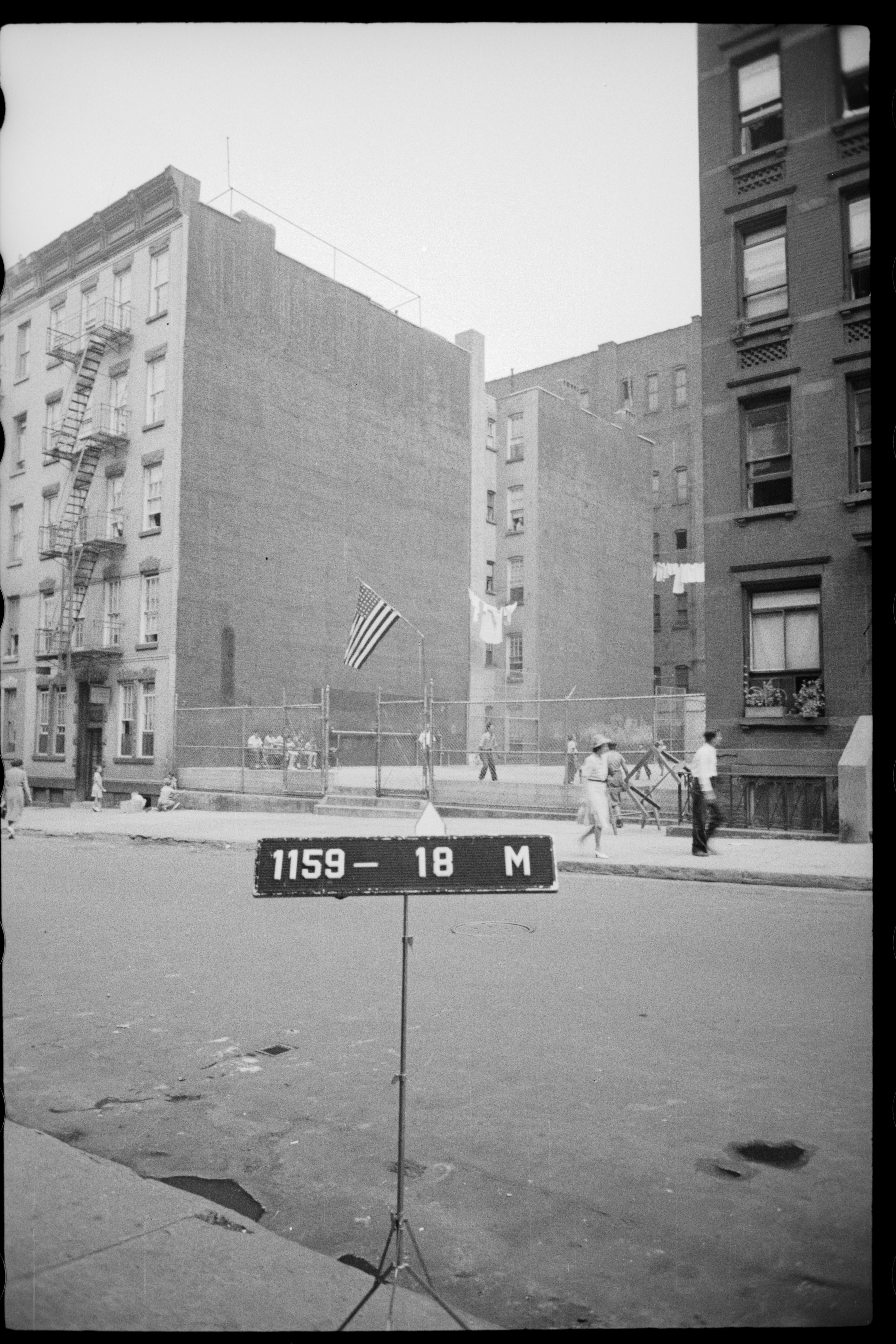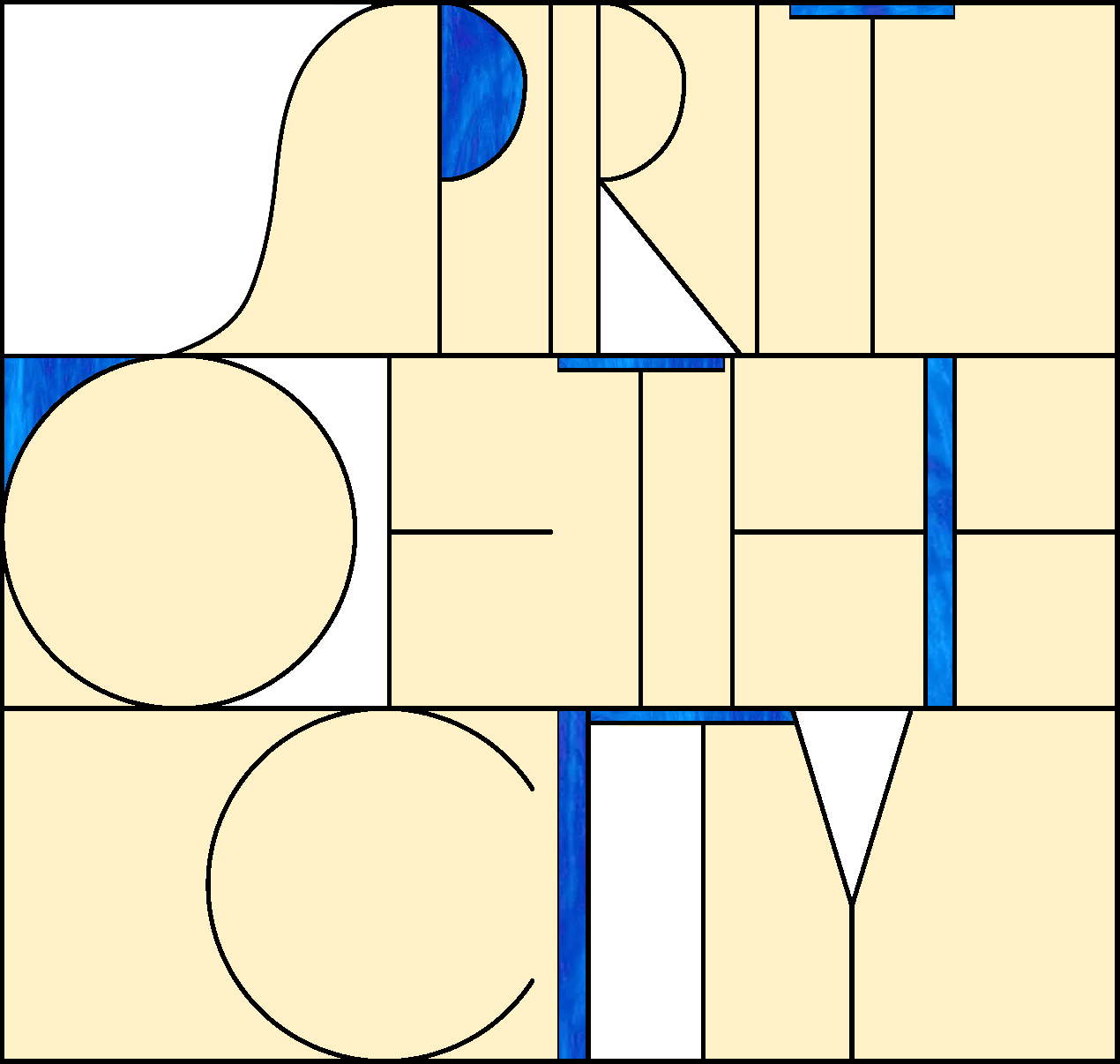
St. Matthew’s Roman Catholic Church
215 West 67th Street
by Jessica Larson
St. Matthew’s Roman Catholic Church served the Upper West Side’s immigrant Catholic communities for nearly 60 years. Built just as the area began to draw more residents at the turn-of-the-century, the church witnessed changes in Catholic demographics as the neighborhood developed.
The church building was designed by architect John J. Deery in 1903; Deery, himself a Catholic, focused his career on ecclesiastical projects in NYC and Philadelphia, as well as several baseball fields. He also participated in the competition held to choose the design for the Cathedral of St. John the Divine in Morningside Heights. St. Matthew’s boasted a plain, Gothic inspired facade; the property cost $16,500 and the building’s construction was $10,000. It was one story and a basement.
He also participated in the competition held to choose the design for the Cathedral of St. John the Divine
Though the church’s building opened in 1903, the congregation held its first mass on September 21, 1902 to a crowd of 50 worshippers in a temporary space in the basement at 166 West 65th Street. The first priest was Reverend Patrick F. Maughan, who had been appointed by the diocese to organize the new parish. Maughan was a native New Yorker, born in 1844 and a Civil War veteran. Maughan was central to the physical creation of the church; he sewed the wardrobes, painted portions of the church, did the cabinet work in the vestry, and created the pedestals that statues of St. Matthew and the Sacred Heart were displayed on. Rev. Maughan served as the church’s priest until his death in 1917.
The church’s congregation greatly expanded in the years following its construction. The new building had seating for 600 to 700 worshippers. By 1914, the parish counted roughly 6,000 congregants, 3,000 of whom were estimated to be Italian. In October 1906, the church purchased the lots behind the church at 216 and 218 West 68th Street to be developed into a rectory. This new building was completed on May 1, 1907 and was four stories and a basement. In 1911, the church purchased the Calvary Baptist church’s building at 223-225 West 67th Street to be used as a school, though it ended up being used as space for various church-related organizations and a Sunday School.
In 1900, just a few years before St. Matthew’s was founded, the area surrounding the site was predominantly composed of white residents, with most immigrants hailing from Ireland. Surprisingly, this didn’t change much over the next 20 years, whereas the areas of San Juan Hill with the highest concentrations of Black residents –the blocks just south of West 65th street –saw rapid growth in numbers of both Black migrants from the South and Black immigrants from the Caribbean. Black Catholics were, as religious scholar Albert J. Rabateau phrased it, a “minority within a minority.” Few if any likely attended St. Matthew’s. The city’s most prominent Black Catholic church was St. Benedict the Moor, originally located in Greenwich Village before migrating in 1898 to a building at 342 West 53rd Street, often considered the lower end of San Juan Hill.
This heavily Catholic neighborhood makeup did not save the church from demolition under Robert Moses’s Lincoln Square Renewal Project
By the 1950s, the block remained predominantly white but with increased numbers of Italian immigrants or children of Italians. There was, however, a significant Puerto Rican population now in the area. This heavily Catholic neighborhood makeup did not save the church from demolition under Robert Moses’s Lincoln Square Renewal Project. In 1959 the church was “suppressed,” meaning the church was officially closed and its congregants absorbed into neighboring parishes. The Lincoln Towers apartment complex was built over the site.
Resources:
1900 United States Federal Census, New York, Borough of Manhattan Enumeration District 463, Election District 18, Ward 19. Familysearch.com
1910 United States Federal Census, New York, Borough of Manhattan Enumeration District 1379, Ward 22. Familysearch.com
1920 United States Federal Census, New York, Borough of Manhattan Enumeration District 546, Assembly District 7. Familysearch.com
1950 United States Federal Census, New York, Borough of Manhattan, Enumeration District 5, Assembly District 3. Ancestry.com
The Catholic Church in the United States of America, Undertaken to Celebrate the Golden Jubilee of His Holiness, Pope Pius X. New York: The Catholic Editing Company. 1914.
“Church News and Notes.” Our Sunday Visitor. Sep. 30, 1904: p. 5.
“Death of Priest Who Helped Build Church.” The Herald Statesman. Jan. 4, 1917: p. 1.
Miller, Lina D. New York Charities Directory. New York: The New York Association for Improving the Condition of the Poor, 1912.
“News from Everywhere.” The Catholic Advance. Jan. 20, 1917: p. 3.
Raboteau, Albert J. A Fire in the Bones: Reflections on African-American Religious History. Boston: Beacon Press. 1995.
Jessica Larson is a PhD Candidate in the Department of Art History, The Graduate Center, CUNY. She is also the Joe and Wanda Corn Predoctoral Fellow at the Smithsonian American Art Museum & National Museum of American History.

